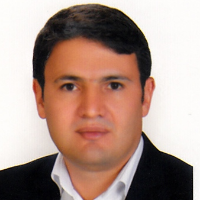Evaluation of Eighteen Reference Evapotranspiration Models under the Ardabil Climate Condition
Author(s):
Article Type:
Research/Original Article (دارای رتبه معتبر)
Abstract:
Background And Objectives
Evapotranspiration is one of the important factors that knowing the exact amount, for determining water requirements and irrigation system design is essential. One way to determine evapotranspiration using experimental models, but to use them in every place must first be evaluated. For this purpose, the study compared the results of 18 models evapotranspiration with drainage Lysimeters and the Penman-Monteith (FAO56) was evaluated.Materials And Methods
Thisstudy was conducted in Hangar research station of theUniversity of Mohagheghe Ardabili, Ardabil. For this purpose grass were planted in 3 lysimeters and around the lysimeters. Grassevapotranspiration measured by volumetric lysimeters based on water balance equation components (input and output water volume, save moisture and evapotranspiration), was estimated.To estimate reference evapotranspiration 18 models, including models such as temperature, radiation, and the combination was chosen. The meteorological synoptic station of Ardabil was used to prepare the information needed to model. Besides the results of lysimeters, evapotranspiration obtained by the FAO Penman-Monteith model also was used as a reference for comparing the performance model. Evapotranspiration estimation models using statistical indices, root mean square error (RMSE), mean absolute error (MAE), the estimated margin of error (PE), theratio (MR)and spearmans rho coefficient is calculated as follows to cross they were evaluated.Results
The results showed that for all models, high dispersion of points around the line one to one, or answer them consistent with the results of lysimeters answer is not good. Moreover, some of these models overestimated and underestimated some of them to calculate evapotranspiration. Using statistical indicators may be compared with the results of lysimeters, at the most proper research models, respectively Blaney Cradle, Ravazzani and the Rn and the weakest models respectively Irmak and Valiantzas. Overall fit the model results against the results of the FAO Penman-Monteith model compared to its results compared to the results of lysimeters, was more suitable. Also according to the statistical criteria in this study, the FAO Penman-Monteith model, the most appropriate models were Turk, Berti and the Trajkovic, and the weakest models, modified Hargreaves-Samani, Irmak and Scandal were determined.Conclusion
In both assessments methods (lysimeters and FAO Penman-Monteith model) were not the same in determining our study was the weakest model in place. That is, both methods together, Irmak models (2003) and models Valiantzas (2013) had the weakest results. In other words, although the sum of the two methods compares the most appropriate models cannot be identified with certainty, but the weakest model was determined.Keywords:
Language:
Persian
Published:
Water and Soil Conservation, Volume:24 Issue: 6, 2018
Pages:
227 to 241
magiran.com/p1805448
دانلود و مطالعه متن این مقاله با یکی از روشهای زیر امکان پذیر است:
اشتراک شخصی
با عضویت و پرداخت آنلاین حق اشتراک یکساله به مبلغ 1,390,000ريال میتوانید 70 عنوان مطلب دانلود کنید!
اشتراک سازمانی
به کتابخانه دانشگاه یا محل کار خود پیشنهاد کنید تا اشتراک سازمانی این پایگاه را برای دسترسی نامحدود همه کاربران به متن مطالب تهیه نمایند!
توجه!
- حق عضویت دریافتی صرف حمایت از نشریات عضو و نگهداری، تکمیل و توسعه مگیران میشود.
- پرداخت حق اشتراک و دانلود مقالات اجازه بازنشر آن در سایر رسانههای چاپی و دیجیتال را به کاربر نمیدهد.
In order to view content subscription is required
Personal subscription
Subscribe magiran.com for 70 € euros via PayPal and download 70 articles during a year.
Organization subscription
Please contact us to subscribe your university or library for unlimited access!



